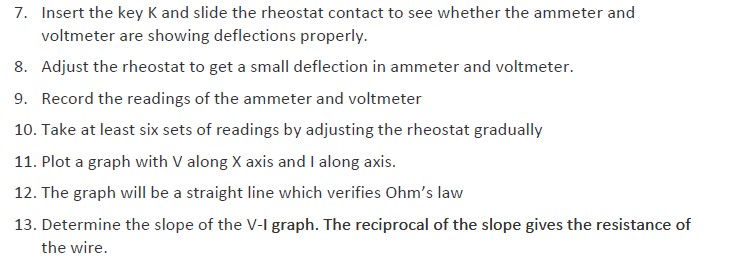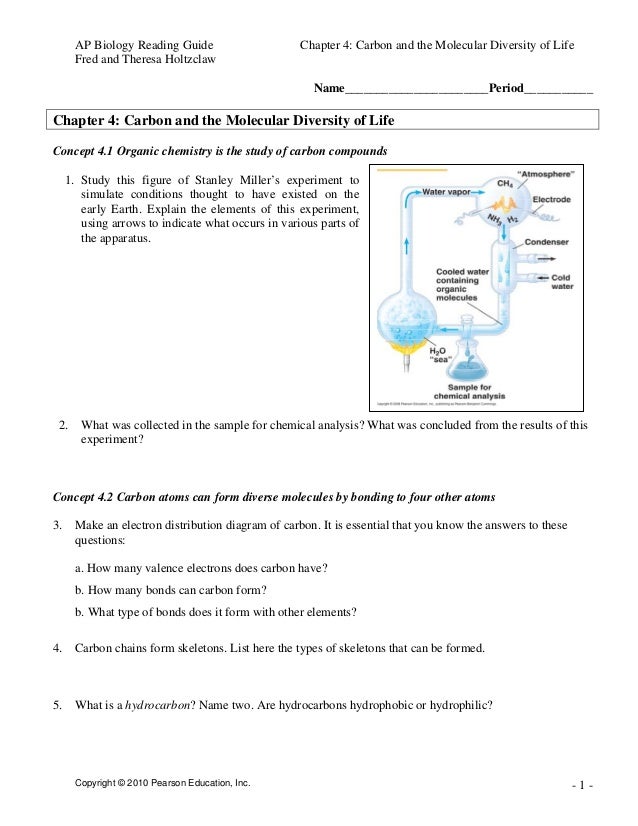Laboratory Manual Chemistry Answers
To understand the substances around us, first we must know how the atoms and molecules that composed them. This process is called the central goal of chemistry. It says that how the matter behaves if the atoms or molecules are changed in the composed of matter. If atoms or molecules are changed in the composition, that implies the structure and chemical formula may also changes, there by properties.
For example, Carbon monoxide molecules possess the correct size and shape to fit neatly into the cavities of that present in hemoglobin which can carry the oxygen molecules in blood. But molecules cannot occupy those cavities of as like as in the hemoglobin.
Water and hydrogen peroxide are another example. A water molecule is composed with two hydrogen atoms and one oxygen atom.
But the hydrogen peroxide is composed by two atoms of hydrogens and two atoms of oxygen. We can see there are large differences between the chemical properties of water and hydrogen peroxide. Water is a stable liquid and it is useful to human life for drinking and bath in purpose.
Hydrogen peroxide is an unstable liquid and burns if it has contact on the skin. Similarly, we pour water on hair just make wet on hairs but when we pour the hydrogen peroxide on our hair it can cause a chemical reaction and turns the hair into a colour. Therefore, based on the composed atoms and molecules, the substances show different properties.
What are Chegg Study step-by-step Laboratory Manual For Chemistry 2nd Edition Solutions Manuals? Chegg Solution Manuals are written by vetted Chegg General Chemistry experts, and rated by students - so you know you're getting high quality answers. Solutions Manuals are available for thousands of the most popular college and high school textbooks in subjects such as Math, Science (, ), Engineering (, ), and more.
Understanding Laboratory Manual For Chemistry 2nd Edition homework has never been easier than with Chegg Study. Why is Chegg Study better than downloaded Laboratory Manual For Chemistry 2nd Edition PDF solution manuals?
It's easier to figure out tough problems faster using Chegg Study. Unlike static PDF Laboratory Manual For Chemistry 2nd Edition solution manuals or printed answer keys, our experts show you how to solve each problem step-by-step. No need to wait for office hours or assignments to be graded to find out where you took a wrong turn. You can check your reasoning as you tackle a problem using our interactive solutions viewer.
Laboratory Manual For Chemistry
Plus, we regularly update and improve textbook solutions based on student ratings and feedback, so you can be sure you're getting the latest information available. How is Chegg Study better than a printed Laboratory Manual For Chemistry 2nd Edition student solution manual from the bookstore?
Our interactive player makes it easy to find solutions to Laboratory Manual For Chemistry 2nd Edition problems you're working on - just go to the chapter for your book. Hit a particularly tricky question? Bookmark it to easily review again before an exam. The best part?

As a Chegg Study subscriber, you can view available interactive solutions manuals for each of your classes for one low monthly price. Why buy extra books when you can get all the homework help you need in one place?
. Page 2 and 3:.
Page 4 and 5:. Page 6 and 7:.
Page 8 and 9:. Page 10 and 11:. Page 12 and 13:. Page 14 and 15:.
Page 16 and 17:. Page 18 and 19:. Page 20 and 21:. Page 22 and 23:. Page 24 and 25:. Page 26 and 27:.
Page 28 and 29:. Page 30 and 31:. Page 32 and 33:. Page 34 and 35:. Page 36 and 37:. Page 38 and 39:. Page 40 and 41:.
Page 42 and 43:. Page 44 and 45:. Page 46 and 47:. Page 48 and 49:.
Page 50 and 51:. Page 52 and 53: 6 The benzene structure is stabilis. Page 54 and 55: Practical 28 1 CH 3CH 2CH 2CH 2OH. Page 56 and 57: Practical 29 1 1-iodobutane undergo. Page 58 and 59: Practical 30 Comparing the physical. Page 60 and 61: 22 CH 3CH 2OH → CH 3CHO + 2H + +2.
Page 62 and 63: 13 OH OH Br Br 3Br 2 2,4,6-tribro. Page 64 and 65: C Oxidation of carbonyl compounds 9.
Page 66 and 67: Practical 33 (1) The properties of. Page 68 and 69: 29 The ester that has formed is eth. Page 70 and 71: Practical 34 1 NH 3, CH 3CH 2CH 2CH. Page 72 and 73: 16 When the reaction mixtures are w. Page 74 and 75: 14 The mixture could be poured into.
